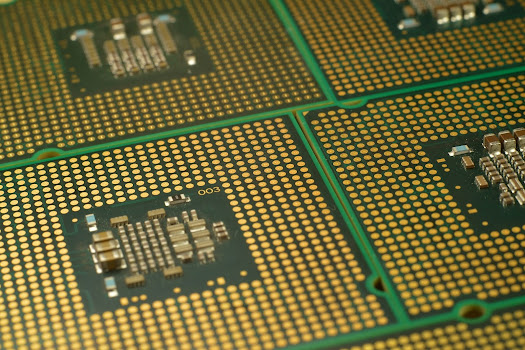Outline
Introduction: Definition of CPUs and their importance
Pre-20th century computing devices
The first electronic computer
Evolution of CPUs in the 1950s and 1960s
The birth of microprocessors in the 1970s
The 1980s: The rise of personal computers
The 1990s: CPUs for gaming and multimedia
The 2000s: The era of multi-core processors
The current state of CPUs: High-performance and energy efficiency
The future of CPUs: Quantum computing and beyond
Impact of CPUs on modern society
Challenges faced by CPU manufacturers
Conclusion
The History of CPUs
Central Processing Units (CPUs) are the brains of modern-day computers. They are responsible for executing instructions and performing complex calculations, making them an integral part of computing devices. This article explores the history of CPUs, from the earliest computing devices to the latest advancements in technology.
Introduction
A CPU is a microprocessor that is responsible for performing instructions and calculations. Without a CPU, a computer would not be able to function. CPUs have become an essential component of modern-day computing, powering everything from smartphones and tablets to supercomputers.
Pre-20th century computing devices
The earliest computing devices were mechanical, such as the abacus, which was used for counting and calculating. In the 1800s, Charles Babbage designed the Analytical Engine, which was the first mechanical computer. However, it was never built.
The first electronic computer
The first electronic computer, the Electronic Numerical Integrator and Computer (ENIAC), was built in 1945. It was massive, taking up an entire room, and was used to perform calculations for military purposes.
Evolution of CPUs in the 1950s and 1960s
In the 1950s and 1960s, CPUs began to evolve rapidly. The first transistorized computer, the TX-0, was built in 1956, which was followed by the first integrated circuit computer, the IBM System/360, in 1964.
The birth of microprocessors in the 1970s
In 1971, Intel released the first microprocessor, the 4004. It was a 4-bit microprocessor that was used in calculators and other small devices. The 8008, released in 1972, was the first 8-bit microprocessor and was used in early personal computers.
The 1980s: The rise of personal computers
The 1980s saw the rise of personal computers, with the introduction of the Apple II and IBM PC. CPUs became faster and more powerful, with the introduction of the 16-bit Intel 8086 processor in 1978, which was used in the IBM PC.
The 1990s: CPUs for gaming and multimedia
The 1990s saw CPUs being used for gaming and multimedia, with the introduction of the Intel Pentium processor in 1993. It was the first CPU to use a superscalar architecture, which allowed it to execute multiple instructions at once.
The 2000s: The era of multi-core processors
The 2000s saw the introduction of multi-core processors, which allowed CPUs to perform multiple tasks simultaneously. The Intel Core processor, introduced in 2006, was the first CPU to have multiple cores.
The current state of CPUs: High-performance and energy efficiency
Today, CPUs are more powerful than ever, with high-performance CPUs such as the Intel Core i9 and AMD Ryzen Threadripper. Energy-efficient CPUs, such as the Intel Atom and AMD APU, have also been developed for use in mobile and low-power devices.
The future of CPUs: Quantum computing and beyond
The future of CPUs lies in quantum computing, which promises to revolutionize computing with its ability to perform complex calculations at lightning-fast speeds. Quantum CPUs, or qubits, are already being developed by companies such as IBM and Google.
Impact of CPUs on modern society
The impact of CPUs on modern society is immeasurable. They have enabled the development of the internet, social media, and e-commerce, as well as advancements in fields such as medicine, engineering, and scientific research.
Challenges faced by CPU manufacturers
CPU manufacturers face a number of challenges, including the need to increase performance while reducing energy consumption and heat generation. There is also a growing demand for CPUs that can perform specialized tasks, such as artificial intelligence and machine learning.
Conclusion
In conclusion, CPUs have come a long way since their early beginnings as mechanical computing devices. They have revolutionized the way we live, work, and communicate, and will continue to do so in the future.





No comments:
Post a Comment